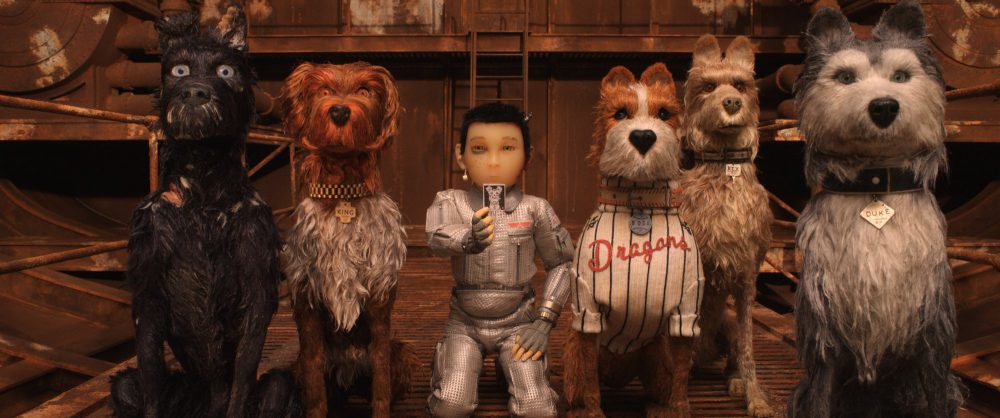 [dropcap style=”flat”]W[/dropcap]ith Wes Anderson’s return to stop-motion animation, the world prepared itself for the same light-hearted, childish universe delivered by the director’s previous animated endeavor “Fantastic Mr. Fox” (2009); however, “Isle of Dogs” crushed any of these expectations. Anderson’s “Isle of Dogs” is a bleak look at what the world would be like if the man’s’ best friend became humankind’s worst enemy—if society was controlled by a cat-loving clan of conspirators that sought to eradicate dogs from the face of the earth. Packed with visual splendor and storytelling, Anderson’s sophomore animation is a mature film featuring a conglomerate cast of characters and intertwining narratives that build towards an eclectic and balanced film.
[dropcap style=”flat”]W[/dropcap]ith Wes Anderson’s return to stop-motion animation, the world prepared itself for the same light-hearted, childish universe delivered by the director’s previous animated endeavor “Fantastic Mr. Fox” (2009); however, “Isle of Dogs” crushed any of these expectations. Anderson’s “Isle of Dogs” is a bleak look at what the world would be like if the man’s’ best friend became humankind’s worst enemy—if society was controlled by a cat-loving clan of conspirators that sought to eradicate dogs from the face of the earth. Packed with visual splendor and storytelling, Anderson’s sophomore animation is a mature film featuring a conglomerate cast of characters and intertwining narratives that build towards an eclectic and balanced film.
“Isle of Dogs” is set in a future dystopia where cat-loving Mayor Kobayashi (Kunichi Nomura) rules Japan’s fictional Megasaki City with an iron fist. When a sudden case of “dog flu” ravages the city’s canine population, Kobayashi quarantines all dogs to the nearby—and appropriately named—Trash Island, Kobayashi’s first deportee is Spots (Liev Schreiber), the military-grade, mechanically-armed guard dog to protagonist Atari (Koyu Rankin), the mayor’s 12-year-old ward.

Despite their betrayal by their human owners, the alpha males are adamant about reuniting Atari with Spots—at least, all the previously domesticated dogs. Retaining their trust and faith in humankind, Rex, Boss and Duke rush to Atari’s side upon his arrival, reminded the love and affection of their past lives. Chief, however, previously being a stray, remains hesitant throughout the film, and only joins Atari’s now-entourage as a result of the group’s “democratic voting system”.

The film itself is divided into chapters, including an introductory prologue about a boy who betrayed humankind in a war between dog and cat, prevailing alongside his canine companions against humans and their felines. Although never once mentioned again, Atari’s journey clearly mirrors the story of the boy soldier, venturing to the isle of dogs isolated from civilization. Visually, frames are almost always nearly symmetrical, oftentimes with only a central character in frame or an axis of symmetry being able to be defined within every sequence. Shots and plot devices from the beginning recur throughout the film, reiterating Anderson’s focus on repeated motifs and parallels within the story.
Visual and narrative juxtapositions are another poignant piece of Anderson’s work. Back in Megasaki, unbeknownst to Atari, the disappearance of the mayor’s ward has led to the emergence of the city’s underbelly where crime and corruption run rampant. A secondary storyline focusing on the mayor, his staff and the city’s rebellion unfolds alongside the saga on Trash Island, with the lucrative source of the “dog flu” and government conspiracy beginning to unravel. Although the backgrounds and colors of Atari’s journey in the abandoned Trash Island feature whites and greys as dominant colors, scenes of Megasaki city are predominantly black and dark, highlighting the seedy nature of the town and its politics.

What did you think of the movie? Let us know down below!



















































































